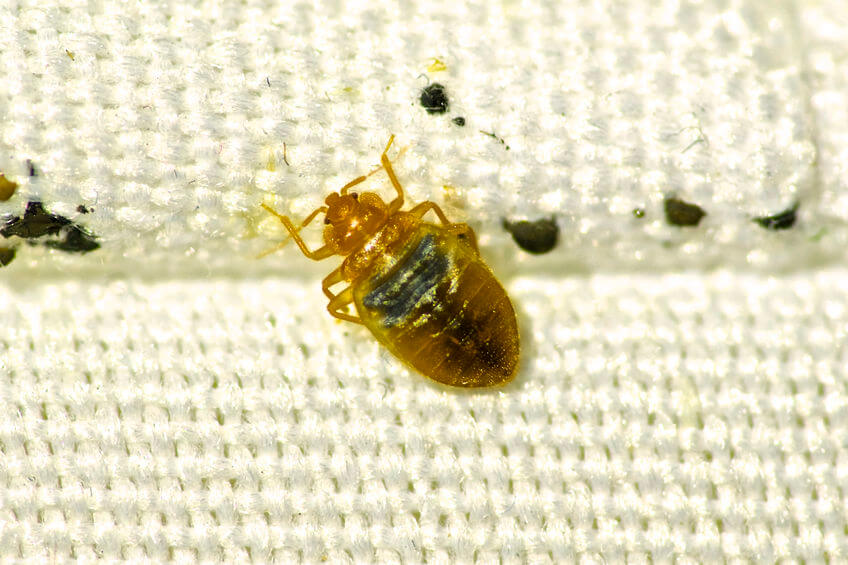Professional Bed Bug Exterminator Near Me: DC Exterminator Services
Professional Bed Bug Exterminator Near Me: DC Exterminator Services
Blog Article
Discovering the Scientific Research Behind Bed Insect Warm Treatments as a Lasting Parasite Administration Method
In the realm of pest monitoring, the quest for sustainable and reliable remedies stays a consistent search. One such approach that has actually gained grip in the last few years is the use of heat treatments to combat bed insect invasions. By using the scientific research behind thermal fatality points for these relentless insects, heat treatments provide an encouraging option to conventional chemical-based strategies. The details of how warm effectively eliminates bed bugs and the more comprehensive effects for sustainable parasite administration practices make this a subject worth exploring even more.
Bed Bug Heat Treatment Refine

Thermal Death Point for Bed Pests
Subjecting bed insects to elevated temperatures past their thermal tolerance array is vital for achieving efficient elimination in warm treatment procedures. By getting to and maintaining temperature levels over the thermal death factor for bed bugs, parasite management experts can make certain extensive elimination of bed bug populaces, consisting of hard-to-reach areas where chemical treatments may be less efficient. Recognizing the thermal fatality factor for bed bugs is vital for applying effective warmth therapy strategies and achieving sustainable insect administration results.
Benefits of Warm Treatments
Having actually developed the essential thermal fatality factor for bed pests, it is vital to now check out the considerable advantages that heat treatments offer in effectively eliminating these resilient pests. Heat therapies existing a number of crucial benefits when compared to typical chemical approaches. One of the primary benefits is that warmth can penetrate deep right into crevices and splits where bed insects hide, ensuring that also one of the most hard-to-reach areas are heated up to lethal temperature levels. This detailed method not just kills live insects but additionally targets bed insect eggs, avoiding future problems.
Additionally, warmth treatments are non-toxic and eco-friendly, making them a lasting pest administration approach. Unlike chemical pesticides, heat treatments do not leave dangerous deposits that can position dangers to human wellness or the environment. This aspect is especially crucial in delicate settings such as medical facilities, institutions, and suburbs where chemical use may not be desirable.
Furthermore, warm therapies have a high success price in removing bed pest problems in a solitary therapy, reducing the need for multiple check outs and lessening interruption to passengers. This performance not only conserves time and cash however likewise supplies comfort to those taking care of bed insect find more information issues.
Efficiency of Heat Treatment

Study studies have constantly shown the efficiency of heat therapies in attaining a high rate of bed insect death. Effectively conducted warm therapies can get to all the gaps and fractures where bed pests might be nurturing, ensuring an extensive technique to elimination. In addition, heat treatments have the added benefit of killing bed insect eggs, which are commonly immune to typical chemical therapies. On the whole, the performance of warmth therapies in getting rid of bed pest problems makes them a trusted and lasting bug administration method.
Lasting Pest Monitoring Perks
Executing sustainable insect management practices provides long-term benefits for both the setting and public wellness. By using methods such as heat therapies for bug control, we can minimize the reliance on harmful chemical pesticides that can have adverse results on pop over here ecological communities my explanation and human health and wellness - DC exterminator. Sustainable parasite administration techniques help in maintaining biodiversity by targeting particular pests without damaging non-target organisms, therefore preserving a balanced ecological community
Moreover, sustainable bug management techniques contribute to the total health and wellness and wellness of the public. By minimizing exposure to toxic chemicals utilized in traditional bug control methods, warm therapies offer a more secure option for parasite administration in household, industrial, and public rooms. This reduction in chemical usage additionally helps in stopping chemical residues from polluting water, air, and dirt, guarding environmental high quality.
Verdict
Finally, bed insect warmth therapies have been shown to be a sustainable and efficient bug monitoring strategy. The thermal death factor for bed pests makes them at risk to heat treatments, which have many benefits over traditional chemical treatments. The efficiency of warm therapies in removing bed pest infestations while lessening ecological influence highlights the possibility of this method as a sustainable service for insect control.
The bed insect heat treatment process involves raising the temperature within infested areas to a level that efficiently gets rid of bed insects and their eggs. By getting to and keeping temperature levels over the thermal fatality factor for bed insects, bug monitoring specialists can make certain detailed elimination of bed insect populations, including hard-to-reach locations where chemical treatments may be much less effective. One of the primary advantages is that heat can penetrate deep into fractures and holes where bed pests hide, guaranteeing that also the most hard-to-reach areas are heated up to deadly temperature levels. Unlike chemical therapies that might leave behind immune populations, warm treatments supply a safe and ecologically friendly option that can permeate deep right into furniture, walls, and various other hard-to-reach locations where bed pests conceal.
The thermal death factor for bed bugs makes them at risk to warm therapies, which have numerous advantages over traditional chemical treatments.
Report this page